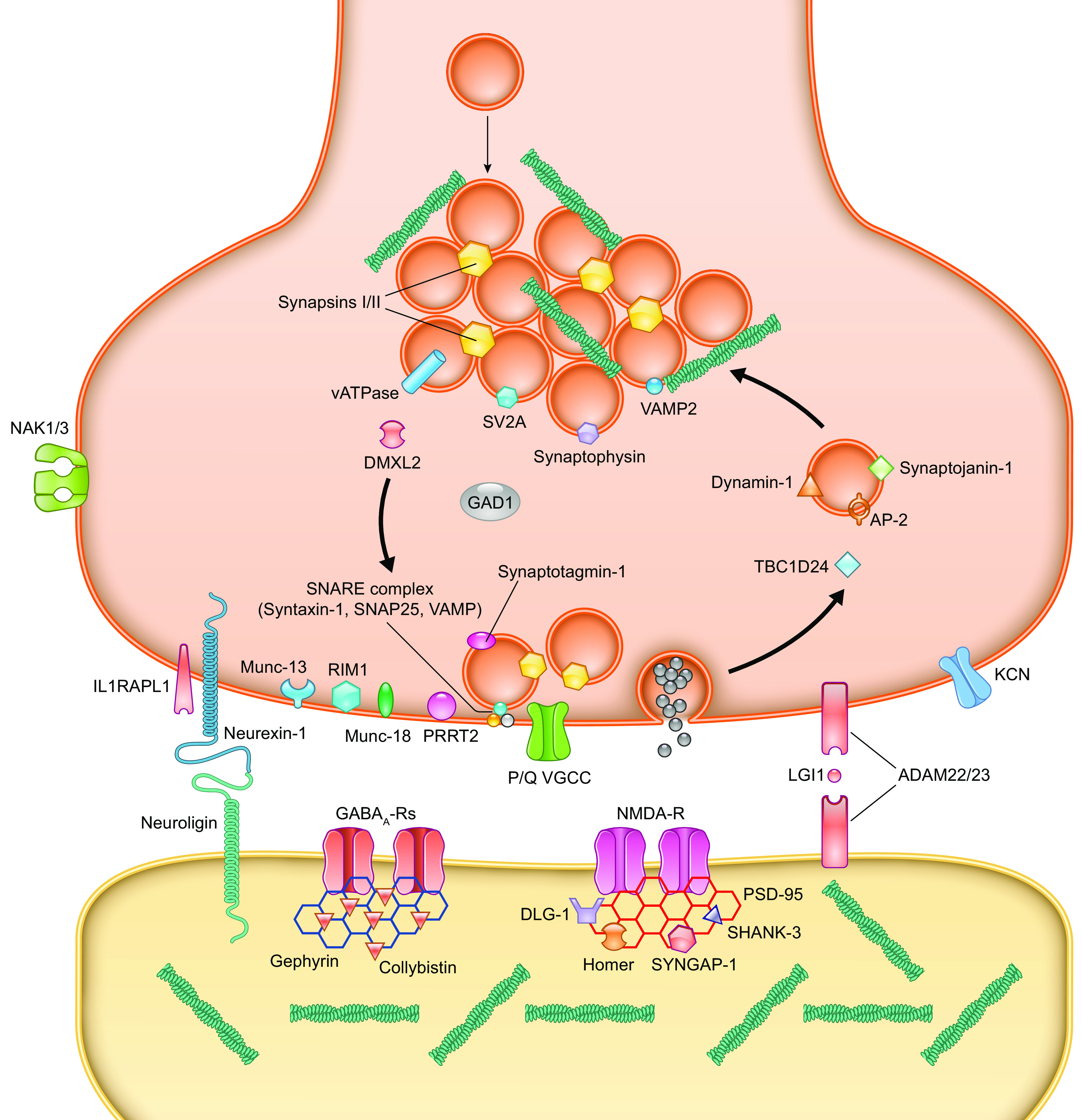FIGURE 8.

Main actors of synaptic transmission and mapping of the synaptic gene products causing synaptic encephalopathies with epilepsy. Schematic representation of a symbolic synapse containing excitatory and inhibitory synaptic components. The main targets of synaptopathies are as follows: 1) At the presynaptic level, gene products involved in the postdocking synaptic vesicle (SV) priming/fusion processes (SNAREs and SNARE-associated proteins: Munc-13, IM1, Munc-18, PRRT2, SNARE proteins, synaptotagmin-1/2, voltage-gated Ca2+ channels), SV trafficking (trafficking proteins: Synapsins I/II, vATPase, synaptophysin, SV2A, VAMP2, synaptojanin-1, AP-2, dynamin-1, TBC1D24), and neurotransmitter (NT) synthesis and loading into SVs (transport proteins: GAD1, vATPase). 2) At the postsynaptic level, postsynaptic receptors and their scaffold/transduction systems (GABAA and NMDA receptors, gephyrin, collybistin, PSD-95, Homer, Shank-3, SynGAP-1, DLG-1). 3) At the synaptic cleft level, transsynaptic and extracellular matrix proteins and their receptors (neurexin-1, neuroligin, IL1RAPL1, ADAM 22/23, LGI1), as well as secreted proteins (SRPX2, reelin). Other presynaptic voltage-gated channels that affect the dynamics of nerve terminal activation and NT release are also shown. Green: the actin-based cytoskeleton that regulates trafficking and maintenance of SV pool in the nerve terminal and concentrates postsynaptic receptors on the postsynaptic side.
